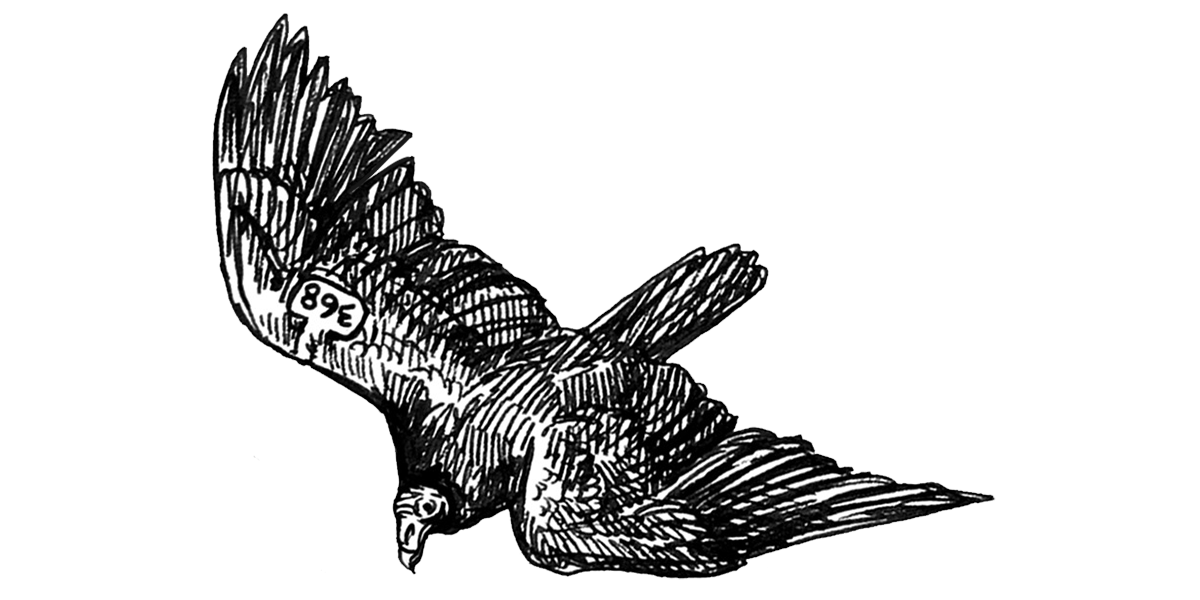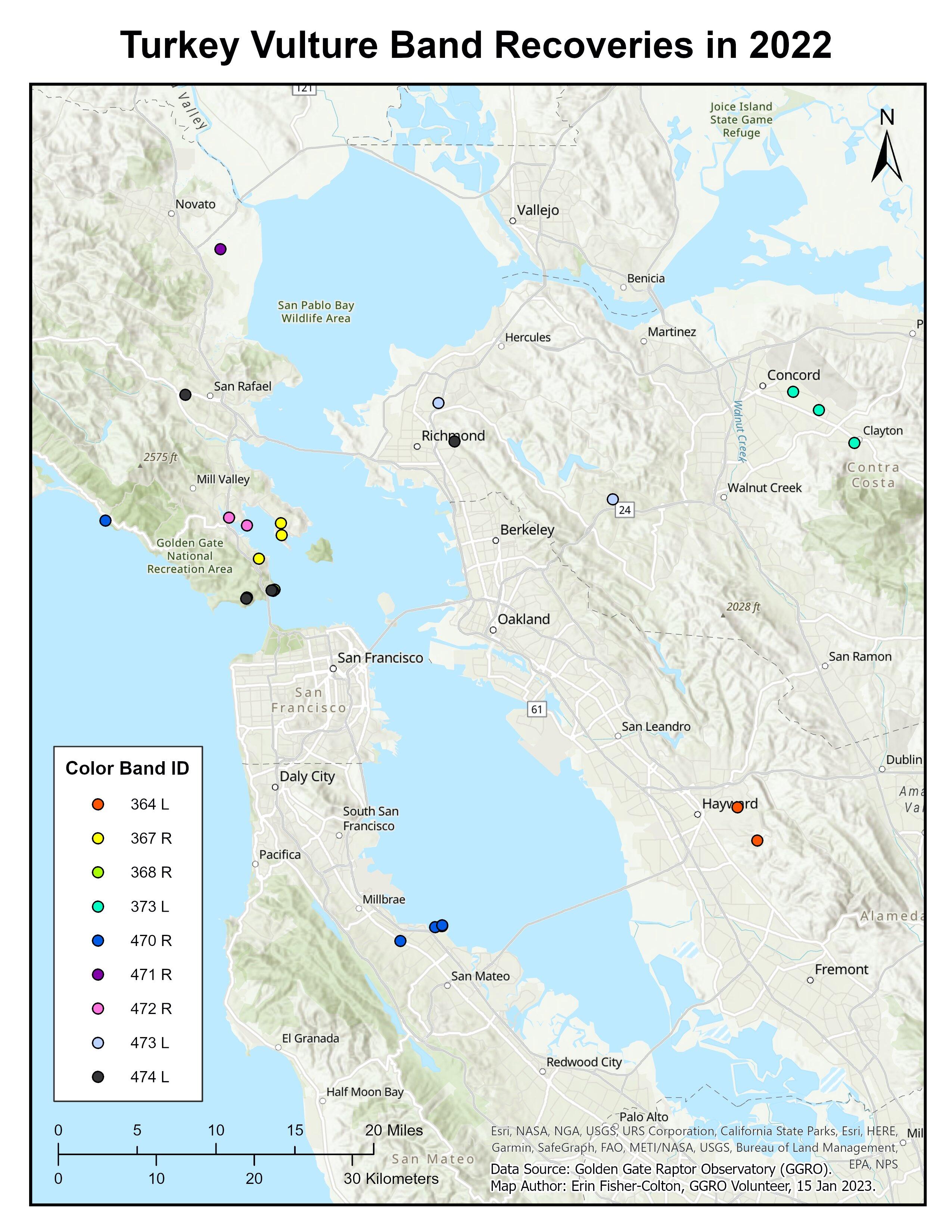Your parks need you now
Your support helps fight climate change and promote park sustainability—please give now.

Beyond being widely misunderstood by the general public, Turkey Vultures are often misunderstood from an ecological perspective as well. Where do they nest? How widely do they migrate, if at all? And how are they impacted by toxics, especially rodenticides, heavy metals, and even microplastics?
From 2017 to 2020, Golden Gate Raptor Observatory (GGRO) wing-tagged 17 Turkey Vultures to study these and other aspects of vulture behavior and conservation, particularly in this urban region. Nine of the tagged vultures were resighted (multiple times) throughout the Bay Area in 2022. The sightings were in Marin, Contra Costa, San Francisco, San Mateo, and Alameda counties.
From day one (August 15th) of the 2022 migration season, GGRO hawkwatch volunteers observed one of our most frequently seen tagged individuals, Turkey Vulture #368 over Hawk Hill. Over the course of the fall season, the volunteers recorded 168 sightings of tagged vultures from the hill, which means during the 411 hours on hawkwatch, we counted a tagged vulture, on average, every 2.5 hours. Following the same trend of the last few years, Turkey Vulture #368 was the most frequently sighted vulture by a considerable margin, with 27 confirmed records from Hawk Hill in 2022. Sightings of other tagged vultures ranged from 1 to 4 sightings throughout the entire season.
Thanks to our steady-handed hawkwatcher-photographers for capturing numbers on the fast-gliding, tagged TVs: John Davis, Don Bartling, Ken Wilson, Mary Malec, and others.

Golden Gate Raptor Observatory
The 2022 season summary of the Golden Gate Raptor Observatory
Your support helps fight climate change and promote park sustainability—please give now.